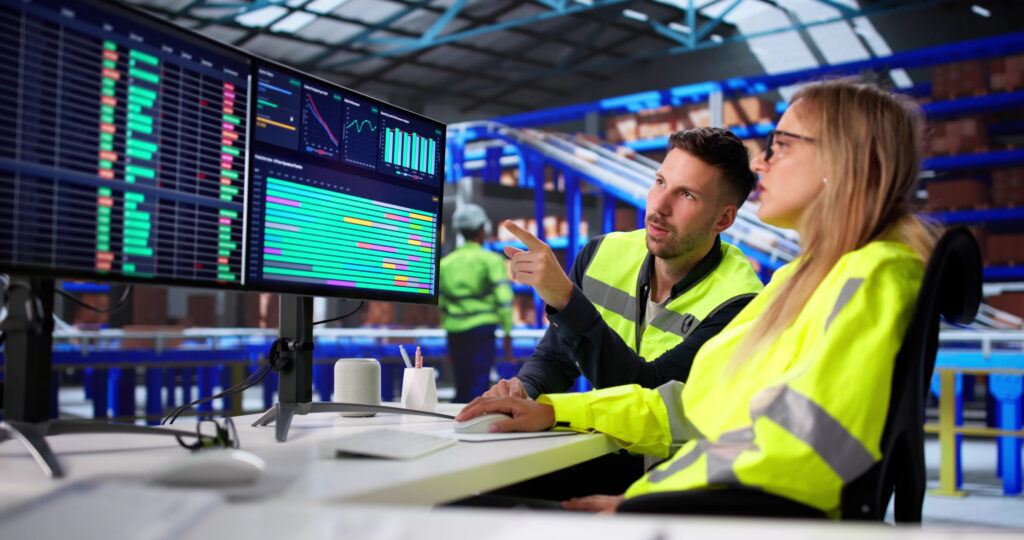5PL: Understanding It, History, and Key Functions

5PL refers to a logistics model built around full digital integration and strategic control. It supports businesses with complex logistics needs by managing the entire logistics function through advanced tools and connected platforms.
5PL, or fifth-party logistics, refers to the full outsourcing of a company’s logistics operations through digital platforms. It focuses on strategic control rather than day-to-day execution.
Logistics has evolved from simple in-house handling (1PL) to more advanced partnerships like third party logistics and fourth party logistics. 5PL takes it further by integrating logistics services across the entire supply chain.
It supports ecommerce businesses and global logistics through data, automation, and real-time coordination. In high-volume environments, 5PL improves supply chain efficiency and reduces cost by having supply chain management under one system.
Understanding 5PL
Fifth-party logistics providers manage entire logistics networks using advanced tools like artificial intelligence, big data, and digital control towers. They do not own physical assets. Instead, they connect lead logistics providers, suitable suppliers, and warehouses to deliver end-to-end solutions.
5PL works through cloud-based platforms that integrate supply chain management services such as warehouse management, transportation management, and freight forwarding. These platforms help clients make informed decisions by offering full supply chain visibility and real-time analytics.
Unlike third party logistics, which handles tasks, or fourth party logistics, which oversees logistics providers, 5PL focuses on total coordination. It serves clients with complex supply chains, such as global e commerce businesses and companies with wide supplier networks.
These firms need more than logistics support—they need centralized control over supply chain planning, project management, and logistics optimization.
1PL to 5PL: The Evolution of Logistics Providers
Logistics providers operate in tiers, each offering a different level of service and control. These range from in-house handling to full-scale logistics integration. As supply chains became more global and complex, businesses moved from managing logistics internally to outsourcing entire networks.
1PL – First-Party Logistics
Companies at this stage handle all logistics activities on their own. They own transportation assets, manage inventory, and oversee delivery. This model suits firms with small operations and limited logistics needs.
2PL – Second-Party Logistics
Businesses outsource transport or storage to carriers or warehouse providers. Second-party logistics offers basic support but lacks integration across the entire supply chain. It’s a transactional relationship focused on individual logistics functions.
3PL – Third-Party Logistics
A third party logistics provider takes over core logistics functions like warehousing, fulfillment, and distribution. Many e commerce businesses use 3PLs for supply chain services that require scale, including freight forwarding and inventory management.
4PL – Fourth-Party Logistics
Fourth party logistics manages multiple 3PLs and coordinates all logistics activities for a client. It acts as a leading provider, overseeing the entire logistics function through a single point of contact. 4PL focuses on logistics strategy, vendor management, and project oversight.
5PL – Fifth-Party Logistics
Fifth-party logistics goes further by integrating several supply chains using digital tools, big data, and artificial intelligence. A 5PL provider builds a connected logistics model that supports supply chain optimization, cost control, and full supply chain visibility.
These services are essential for large enterprises and e commerce platforms managing complex supply chains across global markets.
Key Functions of 5PL Providers

5PL providers take full control of the logistics function by connecting systems, partners, and technologies into a single framework. After taking over the entire logistics model, they deliver solutions that align with business goals, support growth, and reduce operational friction. Below are the key services that define fifth-party logistics:
- Supply chain network design and optimization
5PL providers build and refine logistics networks to support global operations, using tools like business intelligence and quality management systems. - Integration and coordination of multiple 3PLs and 4PLs
A 5PL acts as a single control point, overseeing various logistics partners and streamlining operations across different service levels. - Big data analytics and real-time decision-making
5PLs process large volumes of logistics data to optimize routes, manage inventory, and respond quickly to demand shifts. - Automation and AI-driven logistics planning
Automation tools and artificial intelligence power warehouse management, transportation management, and freight forwarding systems. - E-commerce logistics orchestration
For e commerce businesses, 5PLs handle order fulfillment, last-mile delivery, and supply chain visibility across multiple channels. - Reverse logistics and returns management
They manage returns and product recalls efficiently, reducing delays and costs for high-volume sellers. - Custom software and digital platform integration
5PL providers deliver tailored logistics solutions through custom platforms that connect with a company’s supply chain systems.
5PL services combine strategy, technology, and execution. They deliver full control over logistics supply chains while adapting to the demands of global commerce businesses and complex supply chain activities.
Benefits of Partnering with a 5PL Provider
Businesses operating across multiple markets or managing high-volume operations often face logistics complexity. A 5PL provider brings structure, technology, and expertise to simplify logistics activities across the entire supply chain. By taking full ownership of logistics services, 5PLs help companies reduce risk, improve performance, and scale operations more efficiently.
End-to-End Supply Chain Visibility
5PLs give companies full visibility across multiple supply chains. Using real-time data, dashboards, and digital platforms like the UPS Supply Chain Symphony, they provide updates on inventory, shipments, and warehouse operations. These insights support faster decision-making and more accurate demand forecasting.
Cost Efficiency and Optimization
5PL logistics improves cost control by integrating logistics operations under one system. Automation and centralized management reduce errors, lower transportation costs, and improve warehouse utilization. Companies also save through economies of scale and better supplier relationships.
Enhanced Flexibility and Scalability
Supply chain needs change with market shifts. A 5PL logistics provider adapts quickly by reallocating resources, adjusting transport routes, and expanding logistics space. This flexibility supports growth in international markets and e-commerce businesses without disrupting core business operations.
Technological Integration
5PLs use custom platforms, APIs, and artificial intelligence to connect transportation management, inventory systems, and warehouse management systems. These tools reduce manual work and offer predictive analytics to support supply chain planning and logistics management.
Focus on Core Business
Outsourcing logistics to a fifth-party logistics provider allows businesses to focus on core competencies. By handing off the entire logistics function—project management, freight forwarding, contract logistics—companies gain time and resources for product development, customer experience, and market expansion.
Industries and Business Models That Benefit from 5PL

5PL providers work best for businesses that rely on complex logistics systems and digital tools to manage operations. These companies often operate across regions, manage multiple supply chains, and need real-time visibility to meet customer expectations. 5PL logistics helps them integrate processes, scale quickly, and respond faster to demand shifts.
Industries and models that gain the most from fifth-party logistics include:
- E-commerce and Online Retail
These businesses handle high order volumes, frequent returns, and multi-channel fulfillment. 5PLs provide end-to-end logistics solutions tailored to fast-moving online sales. - Consumer Electronics
With global supply chains, tight margins, and short product life cycles, electronics companies need precision and speed. 5PLs manage inventory, shipping, and returns efficiently. - Healthcare and Pharmaceuticals
Strict regulations, time-sensitive products, and the need for traceability make 5PLs valuable in pharma logistics. They handle storage facilities, transportation, and quality management across borders. - Automotive Manufacturing
Vehicle production involves thousands of components sourced globally. 5PL providers coordinate these complex supply chains while reducing delays and costs. - Fashion and Apparel
Trends change fast in this sector. 5PLs support rapid replenishment, reverse logistics, and seasonal demand swings across global markets. - Industrial Equipment and Machinery
These businesses require heavy freight solutions and often face long lead times. 5PLs streamline freight forwarding and project management for bulky, high-value goods. - Subscription-Based Businesses
Monthly deliveries demand accuracy and consistency. 5PLs automate fulfillment and returns while scaling operations smoothly.
Not every business needs a 5PL. But for those expanding across borders or handling complex logistics flows, a fifth-party logistics provider adds strategic value.
Common Challenges in 5PL Implementation
Adopting a 5PL model requires more than just outsourcing logistics. It demands planning, system upgrades, and cultural shifts in how logistics are managed. Businesses must prepare for new risks tied to technology, control, and vendor relationships.
Data Security and System Integration
5PLs rely heavily on software, APIs, and real-time data. Without strong cybersecurity measures, companies face data breaches and disruptions. Integration with warehouse management systems, transportation platforms, and existing tools must happen smoothly to avoid breakdowns in operations.
Vendor Transparency and Control
Relying on several supply chain partners creates distance from daily logistics activities. Businesses may struggle to monitor third-party performance or enforce standards. This lack of direct oversight can impact quality and lead to delays.
Customization and Alignment
5PL services need to match business goals. Misalignment between logistics models and operational needs creates friction. To succeed, companies must define clear expectations and ensure the 5PL adapts to their logistics space and core business operations.
5PL and the Future of Supply Chain Management
5PL providers align with major shifts in logistics—automation, data intelligence, and platform integration. As Industry 4.0 reshapes global supply chains, 5PL services meet the demand for speed, precision, and adaptability. Companies managing many supply chains turn to 5PL to handle complexity with real-time responsiveness.
AI, machine learning, and predictive analytics now drive core logistics activities. From warehouse management to freight forwarding, 5PL logistics uses these tools to reduce errors and increase efficiency. Integration of big data allows for smarter inventory management and faster decision-making across geographies.
5PL providers are building supply chains that respond instantly to disruptions. They connect entire logistics functions through scalable platforms, offering full control through a single dashboard. In an environment where speed and flexibility define success, 5PL fits the future of global commerce businesses.
Conclusion
5PL refers to a logistics model built around full digital integration and strategic control. It supports businesses with complex logistics needs by managing the entire logistics function through advanced tools and connected platforms.
Companies aiming to operate on a global scale, reduce transportation costs, or improve supply chain visibility should review their current structure. If internal resources are stretched or supply chains are hard to coordinate, a fifth-party logistics model may offer the control and efficiency needed to support long-term growth.
